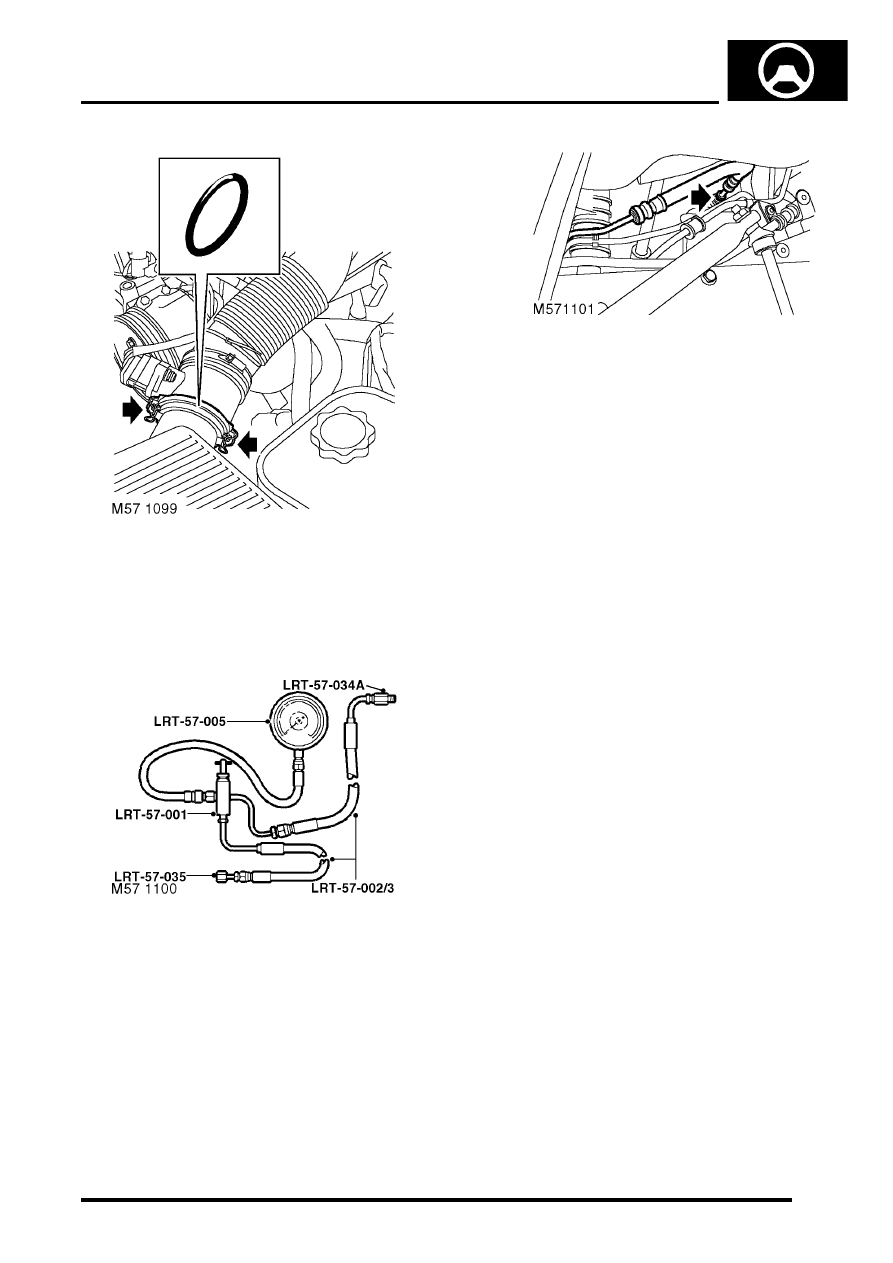Discovery 2. Manual - part 172

STEERING
ADJUSTMENTS
57-23
9. Release clips and remove air intake hose from
air cleaner housing.
Note: Pre 03 MY air intake hose illustrated.
10. Discard intake 'O' ring and move intake aside
for access.
11. Loosen union securing high pressure pipe to
PAS pump and release pipe.
12. Fit adaptor LRT-57-034A to high pressure port
of PAS pump.
13. Fit adaptor LRT-57-035 to existing high
pressure hose.
14. Fit hose LRT-57-002/3 to each adaptor.
15. Fit pressure gauge LRT-57-005 to test valve
LRT-57-001
16. Connect hoses LRT-57-002/3 to LRT-57-001
and tighten unions.
17. Hang pressure gauge in a safe position under
bonnet.
18. Remove PAS reservoir filler cap, fill to level
indicator and refit cap.
19. Connect battery earth lead.
20. Start engine and allow air to bleed from PAS
system by turning steering from lock to lock.
Stop engine and check PAS fluid level.
21. Ensure steering system and test equipment are
free from leaks.
22. Maintain maximum fluid level during test.
23. Open the test valve on LRT-57-001 and start
the engine.
24. With the engine at idle, slowly turn the steering
wheel and hold on full lock.
25. Note the pressure reading on LRT-57-005.
26. Repeat the pressure check for the opposite full
lock.
27. Test pressure should be between 21 and 62
bar, (300 to 900) psi. Dependant on road
surface.
28. With the engine at idle, centralise the steering
wheel. Pressure should read 7 bar (100 psi) or
below.
29. Pressures outside the above tolerance
indicates a fault.
30. To determine if fault is in steering pump or
steering box, close the valve on LRT-57-001 for
a maximum of 5 seconds. Pump damage may
occur if test valve is closed for longer periods.
31. If gauge does not register between 75 and 103
bar, (1500 psi), (maximum pump pressure), the
pump is faulty.
32. If maximum pump pressure is correct suspect
the steering box.